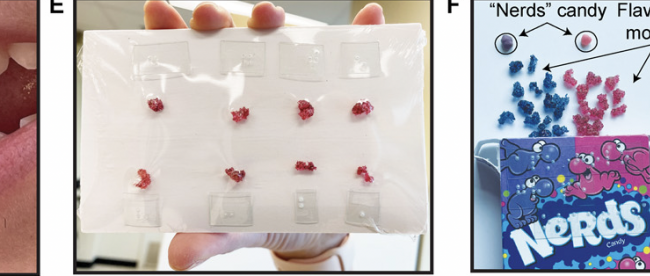Researchers Create Edible Candy To Make Chemistry Accessible For Blind Students
Researchers are testing a new way of making science, especially chemistry, accessible for blind students. This method involves creating edible and non-edible gummy version of models of molecules that can be felt by students with their tongues.
Many science books have detailed and stunning imagery of completed structures of molecules. However, students with visual impairment miss out on seeing all the intricate details offered by these images.
Inspired by his 13 year old son who lost one eye to Retinoblastoma, a cancer that starts in the retina, lead author of the study, Bryan Shaw begin a new study and experiment that would enable blind students to learn about molecules via tactile sensations in the mouth. For this experiment, researchers created two versions of bite-sized 3D models – an edible version made from “gummy bear” gelatin and a non-edible version made with non toxic resin. The non edible version has a string attached to it which the kids hold with their finger as they feel the structure with their tongue. They then asked 281 college students and 31 grade schoolers to identify these molecule models with their tongues.

Fig. 1 “Small” and “smaller” molecular models: Highly portable and encodable with flavor. (A) Smaller nonedible 3D-printed models of calmodulin (CaM) and carbonic anhydrase II (CA II) are comparable in size to a popcorn kernel or grain of rice. Array of protein models fabricated and tested in this study from (B) biocompatible resin (top: small size; bottom: smaller size) or (C) gelatin (flavor-coded or uncoded). (D) Small nonedible model with a safety lanyard threaded through the integral eyelet. (E to G) Smaller nonedible models can be coded with flavor and transported in high volume. (E) Shrink-wrapped array onto a standard index card and (F and G) packed into common containers of candy (shown for demonstration purposes). Photo credit: Jordan C. Koone, Baylor University; Bryan F. Shaw, Baylor University; and Elizabeth Shaw.
According to the results, the participants could identify the molecules with an accuracy of 85.59%! It was also found that 41% of the participants were able to remember the structure if they had felt it in their mouth at some point than just seen and felt it with their hand. How is the tongue so effective in identifying these molecule structures you may ask? It’s because the tongue consists of many packed muscle tissues that transfer easily between small areas, enabling the person to examine the intricacies of the molecule. When the tongue senses the composition, it sends a signal to the brain to create a visible picture.
The typical technique used to introduce blind students to molecules is through very large hand held models which can be as big as a baseball bat. It is not always practical to carry them around and transport. Many institutions may not even be able to afford them.
Even though this was a successful experiment, it might take some time for us to see these “candy molecules” in the market. But one thing these candies have done is reduce barrier to entry by encouraging youngsters with visual impairment to not be afraid of science and explore STEM opportunities with confidence.
The source links below have amazing details on the study if you want to read further. You can also read the full article published recently in Science Advances.


Leave a comment